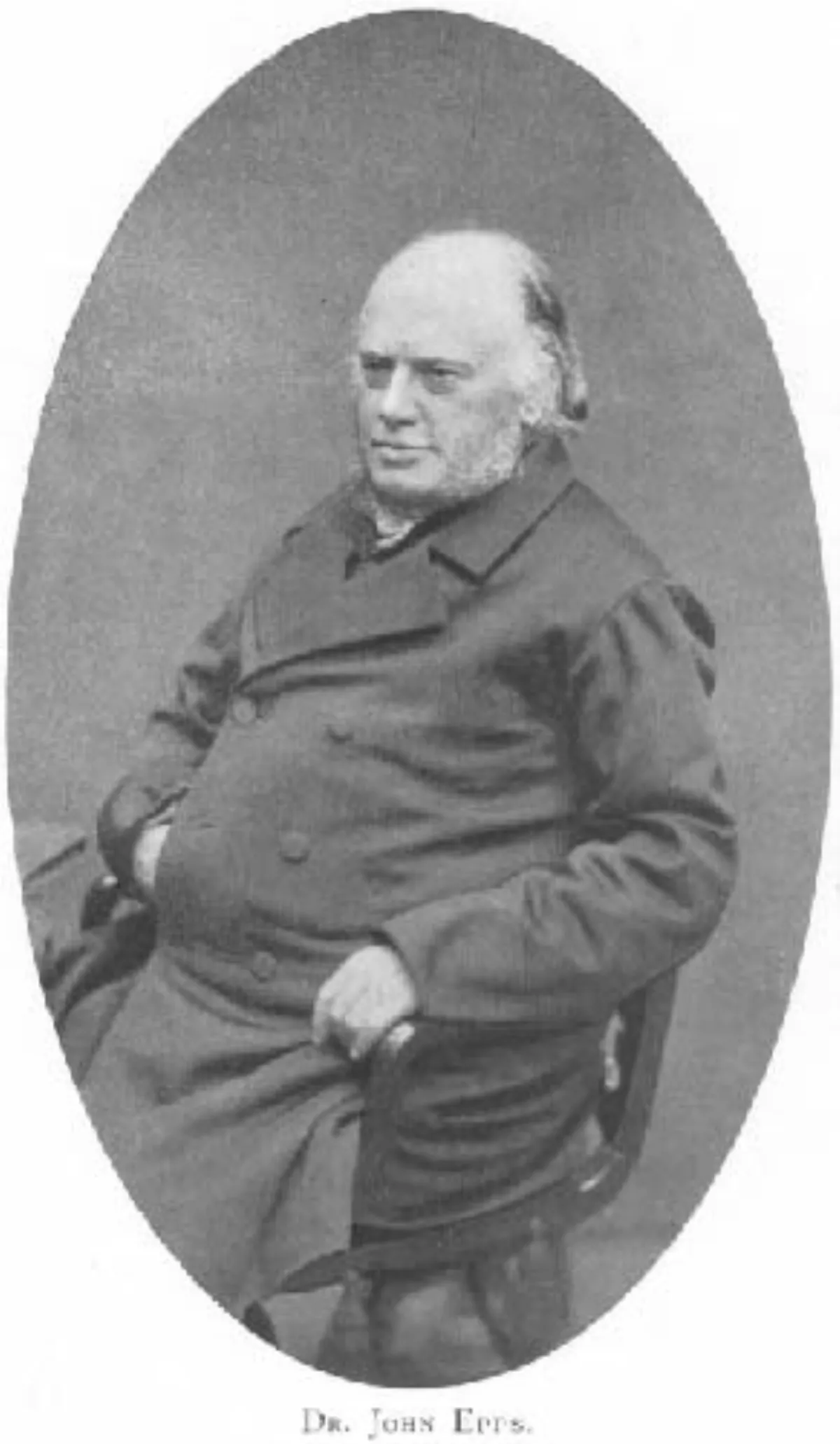 1.
1. Dr John Epps was an English physician, phrenologist and homeopath.

 1.
1. Dr John Epps was an English physician, phrenologist and homeopath.
John Epps was a political activist, known as a champion of radical causes on which he preached, lectured and wrote in periodicals.
Epps, the eldest son of John Epps, was born into a Calvinist family in Sevenoaks, Kent on 15 February 1805.
In 1824, at the age of 18, John Epps went to Edinburgh to study medicine, and in 1827 graduated at the age of 21.
John Epps conceived of medicine as 'a tool of liberation for the poor and lower classes'.
John Epps became Medical Director of the Royal Jennerian and London Vaccine Institution, on the death of John Walker.
John Epps had a Scottish degree, but no license from the Royal College of Physicians.
John Epps lectured on chemistry, botany, and materia medica, in London locations.
John Epps lectured publicly and extensively for the rest of his life, particularly on phrenology and homoeopathy, in London and elsewhere.
John Epps's views were an idiosyncratic mixture from different sources, permitting an optimistic outlook within Calvinist views.
John Epps was drawn to homoeopathy in about 1837 after reading the works of Dr Paul Francis Curie; his other major influence in homoeopathy was Samuel Hahnemann.
John Epps had a "very large homoeopathic practice, especially among the lower middle and lower classes of society".
At odds with Frederic Quin, the earliest British physician who practised homoeopathy, John Epps did not join the British Homoeopathic Society.
John Epps associated with Curie in the English Homoeopathic Association.
On 31 January 1869 John Epps was attacked by paralysis, and he died, at the age of 64, on 12 February.
John Epps is interred at Kensal Green Cemetery, 19 February 1869.
John Epps wrote in his diary "[I have] come to consider all creatures as being equally important in the scale of creation as myself; to regard the poor Indian slave as my brother".
John Epps helped organise the National Political Union, and attended the Radical Club.
John Epps opposed "Church Rates, war, despots, corn laws, and other old institutions", and enjoyed giving political addresses.
John Epps's activism brought him into contact with Joseph Hume, Lady Byron, George Wilson, Giuseppe Mazzini, Thomas Slingsby Duncombe, James Stansfeld, Lajos Kossuth, and Robert Owen.
John Epps became a Chartist, and in 1847 he stood for parliament, in Northampton, with Chartist backing.
John Epps was an active member of the Anti-Corn Law League and joined organizations in favor of the Polish, Italian, Hungarian, and American nationalities.
John Epps stood bail for the Fourierist and revolutionary Simon Francois Bernard in 1858 Orsini affair.
John Epps supported the proposal of Thomas Wakley for a London College of Medicine, speaking in support of it at a meeting in 1831, with his colleague George Dermott; he was on the steering committee for its formation, along with Joshua Brookes and David Daniel Davis.
Not only did John Epps reject the orthodox church establishments, but he rejected a number of the mainstream Christian doctrines.
John Epps rejected the doctrine of the immortal soul, emphasising instead resurrection as the escape from death.
John Epps taught that Hell is the grave, not the place of torment of mainstream Christianity.
John Epps rejected the Christian Trinity, stating that Jesus, the Son of God, was a human by nature.
John Epps spoke out against the glorification of war-heroes: "the honour of the British flag is a specious phrase which blinds men's eyes to right and wrong", he said.
John Epps was one of a long line of Dissenters to take this view, stretching back through Simpson, Lardner, Sykes, going back to the Dutch Anabaptist, David Joris.
John Epps's faith stayed with him throughout his life; it is recorded that "with his last breath he expressed his humble, yet confident faith in the power, wisdom, and goodness of the Great Father of all spirits".
John Epps wrote a number of books, starting before he attended university with A New Way of Teaching English Grammar.
John Epps was a frequent contributor to The Lancet until he adopted homoeopathy.
John Epps was involved in a number of other journals: he was for some time co-editor of the London Medical and Surgical Journal, and for a long period conducted the Christian Physician and Anthropological Magazine, and The Journal of Health and Disease.
John Epps established a journal, Notes of a New Truth, for the propagation to nonprofessionals of the "new school" of homoeopathy, to which he contributed up to the time of his death.